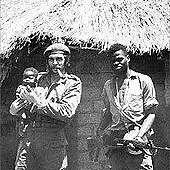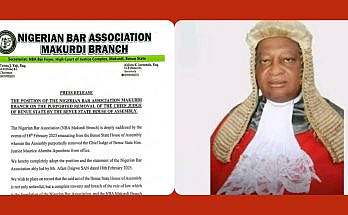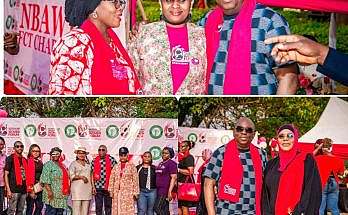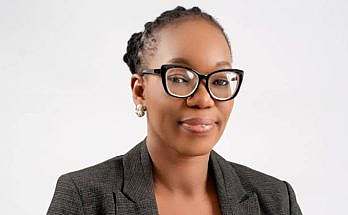In response, a group of radical ‘front-line’ African states led by Algeria and Egypt announced that they would supply the Congolese rebels with arms and troops, and called on others for help.
The government of Cuba announced that it was ready to oblige.

In December, Guevara – already one of the most internationalist of the Cuban leadership – made an impassioned speech, in his capacity as the Cuban delegate to the UN General Assembly, in which he referred to the ‘tragic case of the Congo’ and denounced ‘this unacceptable intervention’ by the Western powers, referring to ‘Belgian paratroopers and transport by US aircraft, which took off from British bases’.
Leaving New York, he embarked on a tour of African states, visiting first Algeria and then Mali, Congo-Brazzaville, Senegal, Ghana, Dahomey, Egypt and Tanzania.
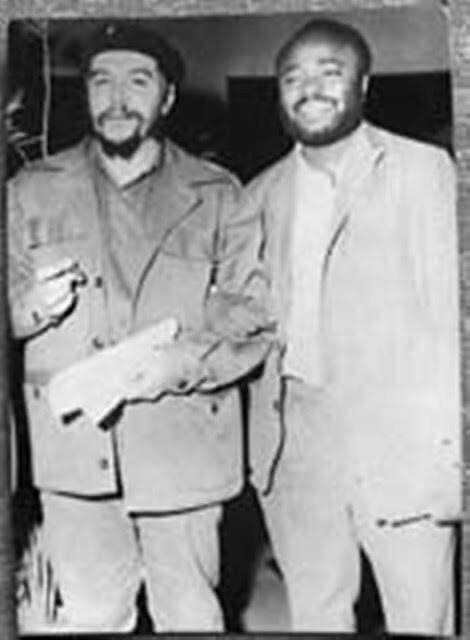
In Dar es Salaam, he met Laurent Kabila, who sought help to maintain what was left of the liberated area in the east and southeast of the Congo, and in Cairo, he met Gaston Soumaliot who wanted men and money for the Stanleyville front in the Congo; and in Brazzaville, he met Agostinho Neto, who requested the Cubans to provide support for the Angolan liberation army, the MPLA. He was excited by what these men told him about the potential for an effective liberation struggle – and for a role for Cuba in providing support – in these three cases.
In February 1965, Guevara flew to Beijing to see what help the Peoples’ Republic of China might provide to the rebellions in the Congo. There he met, among others, Chou en Lai (who between December 1963 and February 1964 had himself visited some ten African countries with a view to assessing how best China might intervene). Soon after his meeting with Che in Beijing, Chou was to make a second visit to Algiers and Cairo, in March 1965, possibly to meet the Congolese rebel leaders about whom Che had informed him, and then in June, he flew to Tanzania where he certainly met both Kabila and Soumaliot.
In the meanwhile, Guevara himself flew back to Cairo, where he talked with Colonel Nasser about his plan to lead a group of guerrillas himself. According to an account of the meeting by Nasser’s son-in-law, the editor and journalist Mohammed Heikal, Nasser was less than enthusiastic and warned Guevara about the dangers of romanticism – and warned him ‘not to become another Tarzan’; ‘it can’t be done’, he said. Guevara was clearly not impressed by this sceptical response.
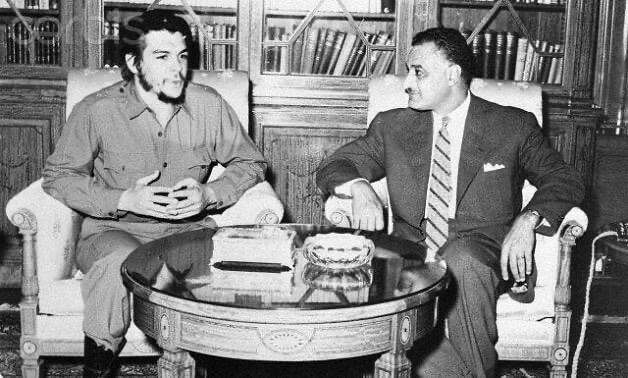
He was already, I suspect, a man with a mission – which was to bring his own personal experience of helping build a revolutionary movement (that had been so successful, in his view, in Cuba, and had been achieved by a handful of committed guerrillas) to bear on other situations elsewhere in the world.
Guevara returned to Cuba, to be greeted at the airport by Fidel Castro. It was the last time he would be seen again in public, until after his death two and a half years later in October 1967, in Vallegrande in Bolivia. Before he left Cuba he wrote a farewell letter to Fidel – which was read out publicly in Havana six months later, in October 1965 – in which he effectively declared that he no longer felt obligated to the Cuban Revolution but to the project of extending its influence and its impact elsewhere: ‘other nations are calling for the aid of my modest efforts… I have always identified myself with the foreign policy of our Revolution, and I continue to do so’.
It was a statement made by a man who felt that his destiny was now to ‘export’ the revolution by leading a guerrilla movement in Africa. If he had been able to integrate, as an outsider and an Argentinian, with the Cuban revolutionaries, why not with African revolutionaries, whether in Angola or in the Congo?
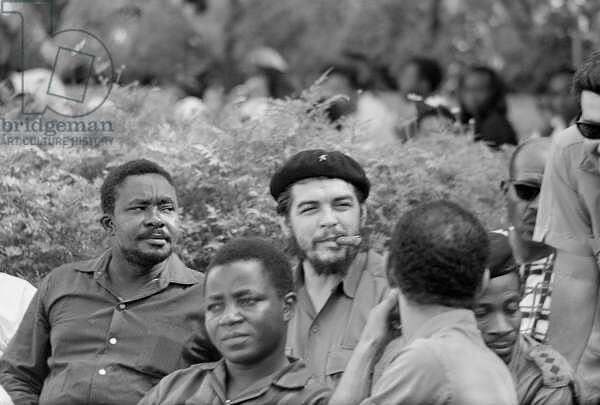
Three weeks later, he flew secretly from Havana with a small group of Cuban troops, first to Cairo and then to Dar es Salaam in Tanzania. Tanzania was at that time a leading radical African state under President Julius Nyerere, which had just created a union with revolutionary Zanzibar. While one ‘column’ of 120 Cubans was to be shipped piecemeal to Tanzania and across Lake Tanganyika into North Katanga, a second ‘column’ of 200 men (the ‘Patrice Lumumba battalion’) was to fly to a base on the other side of the country, near Brazzaville, across the Congo River from Leopoldville (Kinshasa), the capital of the Congo. The eastern ‘column’ was to be officially led by Captain Victor Dreke – a Cuban of African descent about whom Che later wrote to Fidel: ‘he was…one of the pillars on which I relied.
The only reason I am not recommending that he be promoted is that he already holds the highest rank”.
Guevara was part of this ‘column’. The western ‘column’ was to be led by Jorge Risquet Valdes Santana, a member of the central committee of the Cuban Communist Party.
Guevara’s group was greeted at the airport outside Dar es Salaam by the new Cuban ambassador, Pablo Rivalta; the Embassy had been established only a few months before. Guevara was concerned that their arrival risked being noticed by the CIA, but the Americans had just withdrawn their ambassador from Dar and were otherwise occupied.
The Congolese in Dar, however, also paid them little attention.
The rebel leaders, including Kabila and Soumaliot, were away in Cairo supposedly trying to reduce the political divisions within their revolutionary movement, and only relatively junior personnel were available.
It seems that the planning for the Cuban intervention in the African armed struggle was, from the outset, somewhat lacking and that co-ordination with the African leaders was somewhat limited.
Nevertheless, on 22 April 1965, Guevara and his small group of Cubans travelled by road to the lakeside town of Kigoma, where they established a supply base.
Near Kigoma is the village of Ujiji, where Dr David Livingstone and Mr Henry Stanley had met a century before, in 1871. It is not known whether Guevara was aware of this well-known episode in the history of imperialism in Africa, or of the proximity of Ujiji to his anti-imperialist base in Kigoma, but he was savvy enough to give each of the Cuban leaders a number in Swahili – Dreke was Moja (one), Tamayo, a close collaborator of Guevara’s over several years and already one of the most significant figures in Cuba’s international military activities, was Mbili (two) and Guevara himself, misleadingly and confusingly as it turns out, was Tatu (three).
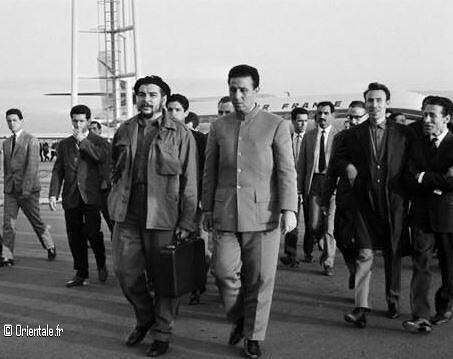
The Cubans crossed the lake and were welcomed at the village of Kibamba by a well-armed group of the People’s Liberation Army, dressed in khaki fatigues provided by the Chinese. They communicated with the Cubans in French.
The Cubans made camp just outside the village. This was the start of what was to be a seven -month campaign in what the mercenary leader Colonel Mike Hoare called ‘the Fizi Baraka pocket of resistance’ against the Tshombe regime, which covered an area twice the size of Wales.
Over the next few months, between April and October 1965, more Cubans arrived, in dribs and drabs, from across Lake Tanganyika, to join their compatriots and together the Cubans and the Congolese developed a plan to explore the terrain they ‘occupied’ and the Cubans began to assess the strengths and weaknesses of their allies, and of their enemies.
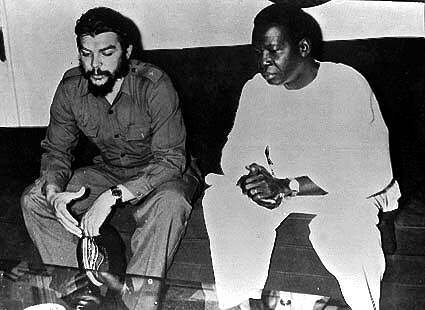
As regards the latter, they noted in their exploratory sorties that the forward bases of the enemy were well defended, supported by small planes and helicopters and white mercenaries; as regards the former, they considered the morale and the competence of the Congolese rebels to be low and found that their leaders, including Kabila, were regarded as strangers – or more pejoratively still as ‘tourists’. The commanders in the field ‘spent days drinking and then had huge meals without disguising what they were up to from the people around them. They used up petrol on pointless expeditions’. On 7 June, in an unexplained accident, the most senior rebel leader present (Kabila was still in Dar es Salaam), Leonard Mitoudidi, was drowned in Lake Tanganyika.
Not long afterwards, instructions came from Kabila that the Cubans should organise an attack on a garrison at Bendera on the inland road which was defending a hydro-electric plant. Guevara was unhappy with the plan; but it was decided to go ahead anyway. On 20 June 1965, a combined force of Cubans, Congolese and Tutsis (some of whom were originally from Rwanda) set off with the idea of attacking the plant and the barracks.
The operation was felt by the Cubans to be a disaster – many of the Tutsis ran away, the Congolese refused to take part, and four Cubans were killed, revealing to the enemy that Cuba was now involved in the rebellion on the ground. Colonel Mike Hoare, on the other hand, was apparently impressed and noted in his memoirs that ‘observers had noticed a subtle change in the type of resistance which the rebels were offering the Leopoldville government… The change coincided with the arrival in the area of a contingent of Cuban advisers specially trained in the arts of guerrilla warfare’.
 The Cubans, however, were depressed and disillusioned. All of the Cubans had been ill at one time or another since their arrival; Guevara himself suffered from bouts of asthma and malaria. There were small military successes – like the ambush of a group of mercenaries in August. But progress appeared to be negligible and the political climate was undoubtedly deteriorating.
The Cubans, however, were depressed and disillusioned. All of the Cubans had been ill at one time or another since their arrival; Guevara himself suffered from bouts of asthma and malaria. There were small military successes – like the ambush of a group of mercenaries in August. But progress appeared to be negligible and the political climate was undoubtedly deteriorating.
Differences between the various rebel factions and their leaders seemed to be coming to a head, and a coup d’etat in Algeria, which replaced Ben Bella – one of Guevara’s principal supporters – by Houari Boumedienne, the army commander, led to a reduced commitment to the Congolese rebellion on the part of the international community of radical states.
But Guevara kept his concerns to himself and when Soumaliot went to Havana early in September 1965 he was able to convince Castro that the revolution was going well; and nothing was done to stop the regular monthly flow of newly trained guerrillas arriving in Tanzania from Cuba.
The white mercenaries, together with the Congolese troops of Tshombe, were now developing a counter-attack, which threatened the entire Cuban position.
However, the Cuban training must have counted for something, for, as Hoare recorded later, ‘the enemy were very different from anything we had ever met before. They wore equipment, employed normal field tactics, and answered to whistle signals.
They were obviously being led by trained officers. We intercepted wireless messages in Spanish… and it seemed clear that the defence… was being organised by Cubans’. But by October, after the Cubans had been in the Congo for barely six months, they and their Congolese allies were on the back foot. Guevara was forced to retreat to their Luluabourg base camp and foresaw a long, last resistance.
Events, however, proved as unpredictable as ever, and President Kasavubu was eventually convinced that he would never get the approval of the majority of African states in the Organisation of African Unity (OAU) if Tshombe continued as prime minister and effectively lord of Katanga, and so Tshombe was sacked and replaced by Evariste Kimba.
It looked for a moment as though the rebellion was saved, but in reality the ‘overthrow’ of the Tshombe government was to prove the prelude to a political reconciliation that would undermine the rebellion and lead to the collapse of the support it had been receiving from African states.
On 23 October 1965, Kasavubu attended a meeting of African heads of state in Accra, presided over by Kwame Nkrumah.
He announced that the rebellion in the Congo was virtually at an end and it would, therefore, be possible to dispense with the services of the white mercenaries, and to send them home.
This was enough to sway many African leaders. It was a signal defeat for the radical African states and enabled a more conservative alliance to emerge in the OAU and marked a turning point in the late colonial history of the African sub-continent.
 On 11 November 1965, sensing that the climate was now favourable, Ian Smith, the White Rhodesian leader unilaterally declared independence from the United Kingdom; in South Africa there was a renewed attack on the ANC which effectively crushed the mass movement against apartheid for half a decade; and the Portuguese were encouraged to maintain their grip on Angola, Mozambique and Guinea-Bissau for another decade, until 1975.
On 11 November 1965, sensing that the climate was now favourable, Ian Smith, the White Rhodesian leader unilaterally declared independence from the United Kingdom; in South Africa there was a renewed attack on the ANC which effectively crushed the mass movement against apartheid for half a decade; and the Portuguese were encouraged to maintain their grip on Angola, Mozambique and Guinea-Bissau for another decade, until 1975.
Ben Bella, as previously indicated, was overthrown; Nkrumah was removed from power while on a visit to China early in 1966, and ‘the Mehdi’ Ben Barka, the Moroccan radical leader who had been organising Cuba’s Tri-Continental Conference – a gathering of revolutionary movements from all over the world, to be held in Havana in January 1966 – was kidnapped in Paris and murdered.
 Meanwhile, back in the Congo, when Mike Hoare heard of Kasavubu’s speech and pledge to send the mercenaries home, he flew to Leopoldville to see Mobutu in person. ‘The general was furious’, he recalls, ‘he had not been consulted…and felt bitter in consequence’. Kimba, the new prime minister, was persuaded to make a statement to the effect that there was no intention of sending the mercenaries home until the Congo was thoroughly pacified. Guevara was also struggling with the turning political tide in Africa. On 1 November 1965 he received an urgent message from Dar es Salaam warning him that the Tanzanian government, as a result of the Accra meeting, had decided to pull the plug on the Cuban expeditionary force. President Nyerere, all too aware of the internal feuding within the Congolese leadership and concerned about its implications, felt he had little choice.
Meanwhile, back in the Congo, when Mike Hoare heard of Kasavubu’s speech and pledge to send the mercenaries home, he flew to Leopoldville to see Mobutu in person. ‘The general was furious’, he recalls, ‘he had not been consulted…and felt bitter in consequence’. Kimba, the new prime minister, was persuaded to make a statement to the effect that there was no intention of sending the mercenaries home until the Congo was thoroughly pacified. Guevara was also struggling with the turning political tide in Africa. On 1 November 1965 he received an urgent message from Dar es Salaam warning him that the Tanzanian government, as a result of the Accra meeting, had decided to pull the plug on the Cuban expeditionary force. President Nyerere, all too aware of the internal feuding within the Congolese leadership and concerned about its implications, felt he had little choice.
But Guevara had already considered the option of remaining behind, whatever happened, ‘with twenty well-chosen men’. He would then have continued to fight until the movement developed or until its possibilities were exhausted – in which case, he would have decided to seek another front or to request asylum somewhere. It really seems that he felt he still had a mission outside Cuba. He asked for help from China and was advised by Chou en Lai to remain in the Congo, forming resistance groups, but without entering himself into combat. On 20 November, however, he sounded the retreat and organised the crossing of Lake Tanganyika back into Tanzania. ‘All the Congolese leaders’, he wrote, ‘were in full retreat, the peasants had become increasingly hostile’.
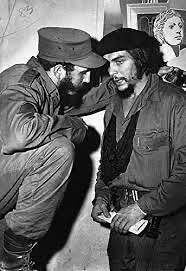
Fidel Castro himself would say, years later, that ‘in the end it was the revolutionary leaders of the Congo who took the decision to stop the fight, and the men were withdrawn.
In practice, this decision was correct; we had verified that the conditions for the development of this struggle, at that particular moment, did not exist’.
Whether that was indeed the case or merely the product of a fait accompli, is debatable. In any case, however, after a few days in Dar es Salaam, most of the Cubans flew home, via Moscow, to Havana, where there was a de-briefing. Victor Dreke returned to Cuba to head a military unit preparing internationalist volunteers; and in 1966, he headed the Cuban military mission to Guinea-Bissau/Cape Verde, where he served alongside Amílcar Cabral. He then performed a similar function in the Republic of Guinea.
He returned to Guinea-Bissau in 1986, heading the Cuban military mission until 1989 [1]. Jorge Risquet became Head of the Cuban Civil Internationalist Mission in the People’s Republic of Angola between 1975 and 1979 in support of Agostino Neto and the MPLA.[2] Other members of Guevara’s guerrilla force were also later to be involved once again in Africa.
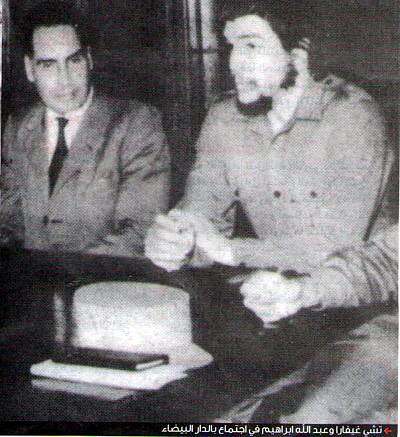
Che Guevara himself remained after the Cuban military mission, in Dar, in the Cuban embassy, to write his account of the ‘Congolese campaign’. Early in 1966, he travelled to Prague and then, eventually, returned to Cuba, where he helped prepare the expeditionary force that would eventually, in November 1966, establish itself in eastern Bolivia.
There, unlike the situation in the eastern Congo where he was prepared to accept the ‘Number Three’ position (as Tatu), for whatever reason, he insisted on openly leading the force. His insistence on this meant that he received no support from the Bolivian Communist Party, which left the Cuban guerrillas effectively isolated.
© With additional materials from the internet.

